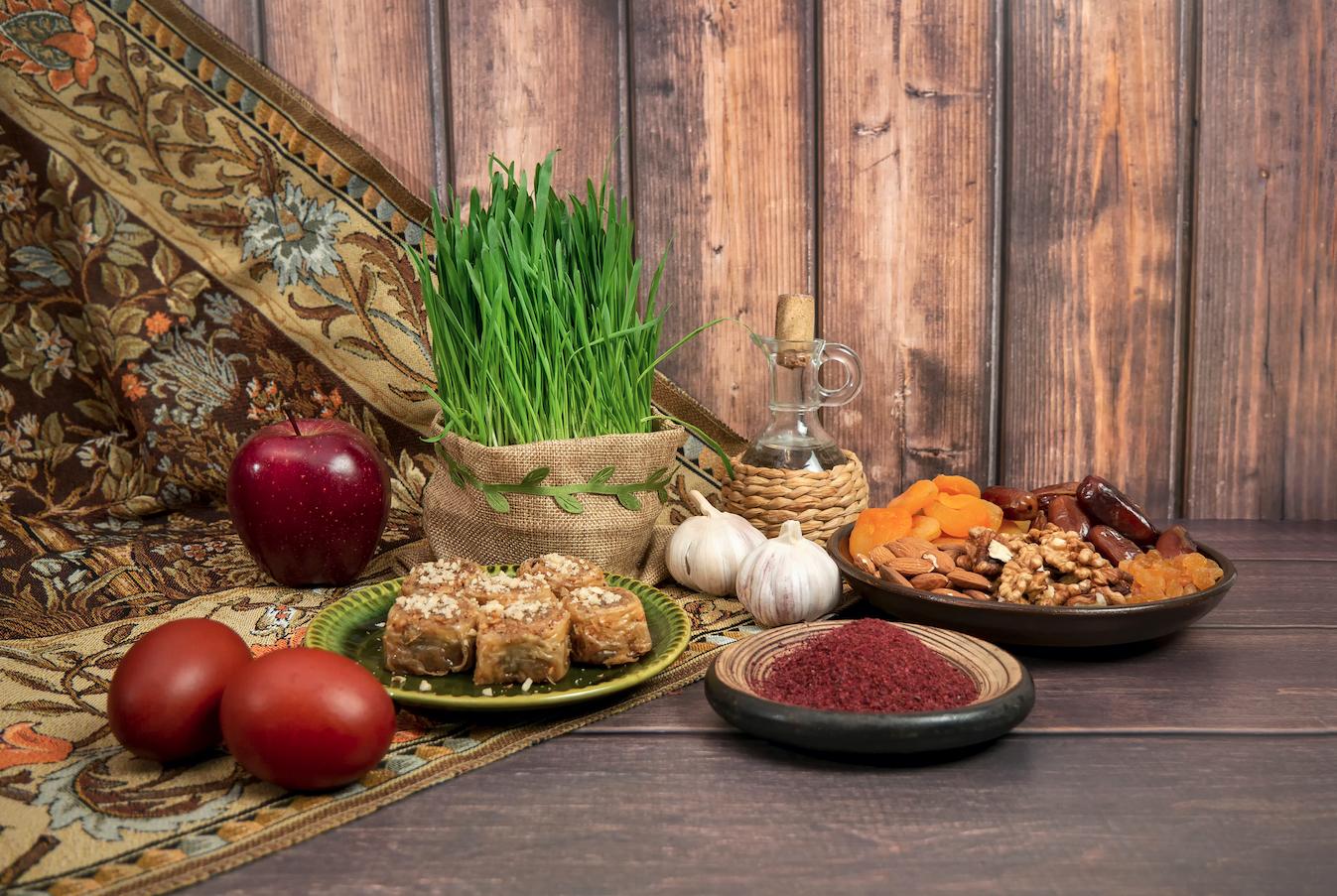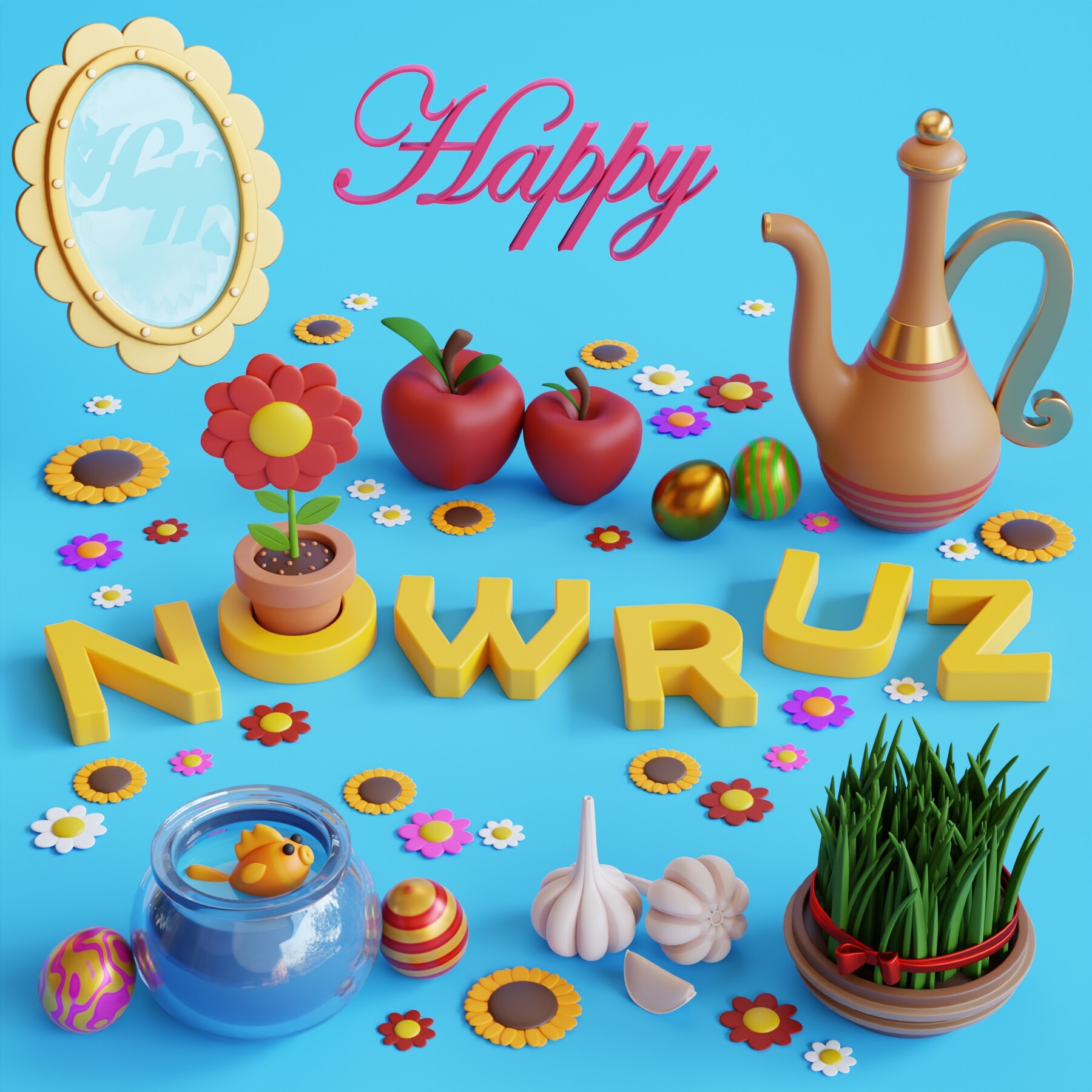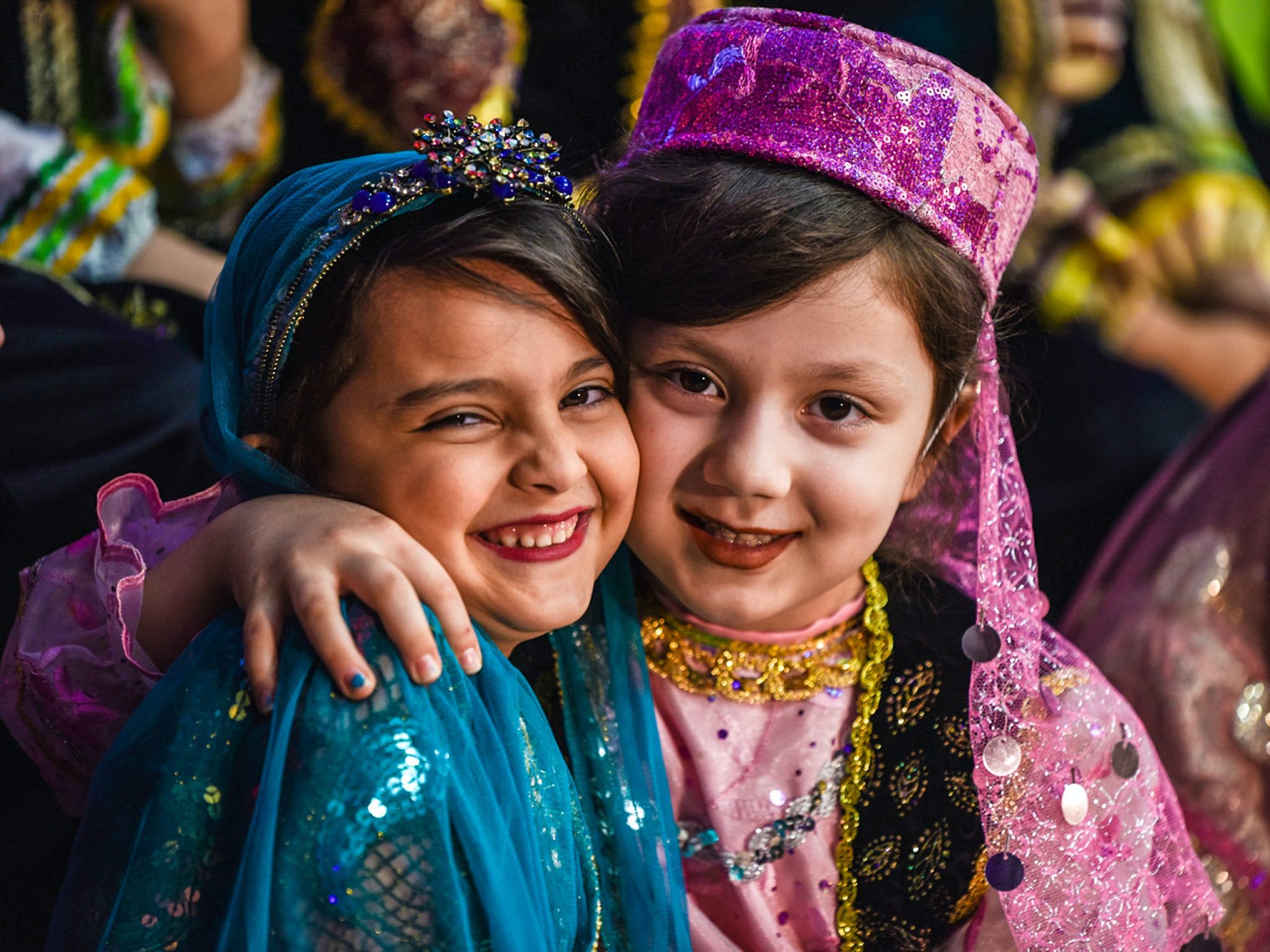Discover The Rich Traditions And Meaning Of Nowruz
Nowruz, translating to "New Day" in Persian, is a timeless festival marking the beginning of spring and the Iranian New Year. Celebrated by millions globally, Nowruz embodies joy, renewal, and cultural unity. This vibrant celebration has deep historical roots and continues to hold immense significance for communities worldwide.
Nowruz transcends borders and cultures, reflecting shared values of peace, harmony, and new beginnings. The festival is not merely about welcoming the new year but also about reconnecting with nature and strengthening bonds with family and friends. It is a moment when people unite to celebrate life's beauty and the promise of a brighter tomorrow.
With its rich traditions and customs, Nowruz offers a fascinating window into the cultural heritage of the regions that celebrate it. From elaborate feasts to symbolic rituals, this festival showcases the diversity and richness of the communities that observe it. In this article, we will explore the history, traditions, and significance of Nowruz, uncovering why it remains a cherished celebration for so many people worldwide.
Read also:Comprehensive Guide To Tracking Ncaa Basketball Scores
Table of Contents
- History of Nowruz
- Symbolism Behind Nowruz
- Nowruz Traditions and Customs
- Nowruz Food and Feasts
- How Nowruz is Celebrated in Different Countries
- Modern-Day Significance of Nowruz
- Cultural Impact of Nowruz
- Rituals and Practices During Nowruz
- Nowruz as a UNESCO Intangible Cultural Heritage
- The Future of Nowruz Celebrations
The Timeless History of Nowruz
Nowruz boasts a history spanning over 3,000 years, with its origins deeply rooted in ancient Persia. It was celebrated during the Zoroastrian Empire, symbolizing the triumph of good over evil and light over darkness. Closely tied to the agricultural calendar, Nowruz marked the start of spring and the planting of crops, making it a pivotal moment in the ancient Persian way of life.
Throughout the centuries, Nowruz has evolved and spread across various regions, including Central Asia, the Caucasus, the Black Sea Basin, and the Balkans. Despite the influence of diverse cultures and religions, the essence of Nowruz has remained steadfast, emphasizing renewal, harmony, and hope for the future. Its enduring legacy is a testament to its universal appeal and timeless relevance.
Uncovering the Origins of Nowruz
The origins of Nowruz can be traced back to the ancient Zoroastrian religion, which revered the natural cycles of the earth. Initially celebrated as a way to honor the changing seasons and express gratitude for bountiful harvests, this connection to nature remains a central theme in modern Nowruz celebrations. The festival's ancient roots highlight its profound significance in shaping the cultural identities of the regions where it is celebrated.
The Profound Symbolism of Nowruz
Nowruz is steeped in symbolism, with every aspect of the celebration carrying deep meaning. The festival represents the victory of life over death, light over darkness, and good over evil. These themes are beautifully reflected in the rituals and traditions associated with Nowruz, making it a time of spiritual renewal and personal reflection. The festival invites participants to embrace new beginnings and cherish the cyclical nature of life.
Key Symbols of Renewal
- Spring Cleaning: Families engage in a thorough cleaning of their homes before Nowruz, symbolizing the shedding of the old and embracing the new. This practice serves as a metaphor for personal and spiritual cleansing.
- Haft-Seen Table: A traditional Nowruz spread featuring seven items starting with the letter "S" in Persian, each representing a different aspect of life such as prosperity, love, and health. The Haft-Seen table is a visual representation of the festival's symbolic richness.
- Fire Jumping: A ritual where people jump over small bonfires to purify themselves and ward off bad luck. This practice symbolizes the casting away of negative energies and the welcoming of good fortune in the coming year.
Exploring Nowruz Traditions and Customs
Nowruz is celebrated through a diverse array of traditions and customs that vary depending on the region. Common practices include visiting family and friends, exchanging gifts, and participating in community gatherings. These traditions strengthen social bonds and foster a sense of unity among participants, creating cherished memories and lasting connections.
The Importance of Family Gatherings
Family plays a central role in Nowruz celebrations. During the festival, people prioritize visiting their relatives and spending quality time together. This tradition underscores the importance of family values and ensures that relationships are nurtured and maintained. The emphasis on family gatherings highlights the festival's role in preserving cultural heritage and strengthening community ties.
Read also:Donovan Mitchell The Nba Star Shaping The Future Of Basketball
Delicious Feasts and Traditional Nowruz Cuisine
No Nowruz celebration is complete without a sumptuous feast. Traditional Nowruz dishes vary by region but often include rice, fish, and a variety of herbs and spices. The food served during Nowruz not only delights the palate but also carries symbolic meanings, representing abundance, prosperity, and good fortune. These culinary traditions add depth and richness to the festival's cultural tapestry.
Must-Try Nowruz Dishes
- Kuku Sabzi: A herbed frittata made with fresh greens and herbs, symbolizing renewal and vitality.
- Reshteh Polo: A rice dish cooked with noodles and a variety of herbs, representing prosperity and good fortune.
- Ash-e Reshteh: A hearty soup made with beans, noodles, and herbs, signifying patience and perseverance.
Diverse Celebrations of Nowruz Around the World
Nowruz is celebrated in many countries, each adding its unique flair to the traditional festival. From Iran to Afghanistan, Turkey to Kazakhstan, the celebration of Nowruz brings people together in a shared expression of joy and hope. The festival's adaptability and inclusivity allow it to resonate with diverse cultures and communities worldwide.
Nowruz Celebrations in Iran
In Iran, Nowruz is the most significant holiday of the year, with preparations beginning weeks in advance. The Haft-Seen table is a focal point of the celebration, and families gather to enjoy lavish feasts and exchange gifts. The festival spans 13 days, culminating in Sizdah Bedar, a day spent outdoors enjoying nature. This outdoor tradition emphasizes the importance of reconnecting with the natural world and celebrating life's beauty.
The Modern-Day Significance of Nowruz
In today's fast-paced world, Nowruz continues to hold profound meaning for millions of people. It serves as a reminder to pause and reflect on the past year while embracing the opportunities that lie ahead. The festival encourages individuals to reconnect with their cultural heritage and embrace the values of peace, harmony, and unity, offering a moment of respite in an increasingly hectic world.
Nowruz in the Digital Age
With the rise of technology, Nowruz celebrations have expanded beyond physical gatherings. People now use social media platforms to share their Nowruz experiences and connect with others who celebrate the festival. This digital extension of Nowruz helps preserve its traditions while making them accessible to a global audience. The festival's adaptability ensures its relevance in the modern era.
The Cultural Legacy of Nowruz
Nowruz has had a profound impact on the cultures of the regions where it is celebrated. It has influenced art, music, literature, and cuisine, leaving a lasting legacy that continues to inspire people today. The festival's emphasis on cultural diversity and inclusivity makes it a powerful symbol of global unity, bridging gaps between communities and fostering mutual understanding.
Nowruz in Literature
Throughout history, Nowruz has been celebrated in literature, with poets and writers drawing inspiration from the festival's beauty and significance. Works such as Ferdowsi's "Shahnameh" and Rumi's poetry highlight the essence of Nowruz, capturing its timeless appeal in words that resonate across generations. These literary masterpieces underscore the festival's enduring cultural impact.
Rituals and Practices During Nowruz
The rituals and practices associated with Nowruz are as diverse as the regions that celebrate it. From fire jumping to visiting cemeteries, these traditions help participants connect with their ancestors and the natural world. Each ritual carries its own significance, contributing to the festival's overall meaning and cultural richness.
The Iconic Fire Jumping Ritual
Fire jumping is one of the most iconic Nowruz rituals, where participants leap over small bonfires to purify themselves and rid themselves of bad luck. This practice is believed to bring good fortune and protect against misfortune in the coming year. The fire jumping ritual symbolizes the casting away of negativity and the welcoming of positive energy, making it a powerful moment of transformation and renewal.
Nowruz as a UNESCO Intangible Cultural Heritage
In 2010, Nowruz was officially recognized by UNESCO as an Intangible Cultural Heritage of Humanity. This designation highlights the festival's importance as a cultural tradition that promotes peace, tolerance, and mutual respect among communities. The recognition has helped raise awareness about Nowruz and ensure its preservation for future generations, safeguarding its rich heritage for years to come.
The Bright Future of Nowruz Celebrations
As the world becomes increasingly interconnected, the celebration of Nowruz is poised to grow in scope and reach. With its universal themes of renewal and harmony, Nowruz has the potential to inspire people from all walks of life to come together and celebrate the beauty of diversity. By embracing the traditions of Nowruz, we can build a more inclusive and understanding global community.
Promoting Global Participation in Nowruz
To ensure the continued success of Nowruz celebrations, it is essential to encourage participation from people of all backgrounds. By sharing the stories and traditions of Nowruz, we can foster greater cultural understanding and appreciation. This inclusivity will help preserve the festival's rich heritage while making it relevant to modern audiences, ensuring its legacy endures for generations to come.
Conclusion
Nowruz is more than just a festival; it is a celebration of life, renewal, and the enduring spirit of humanity. From its ancient roots in Persia to its modern-day celebrations around the world, Nowruz continues to inspire people to embrace the values of peace, harmony, and unity. By understanding and appreciating the traditions of Nowruz, we can enrich our lives and contribute to a more compassionate and interconnected world.
We invite you to share your thoughts and experiences about Nowruz in the comments below. Let's continue the conversation and celebrate the beauty of this vibrant festival together. Don't forget to explore our other articles for more insights into cultural traditions and global celebrations.


